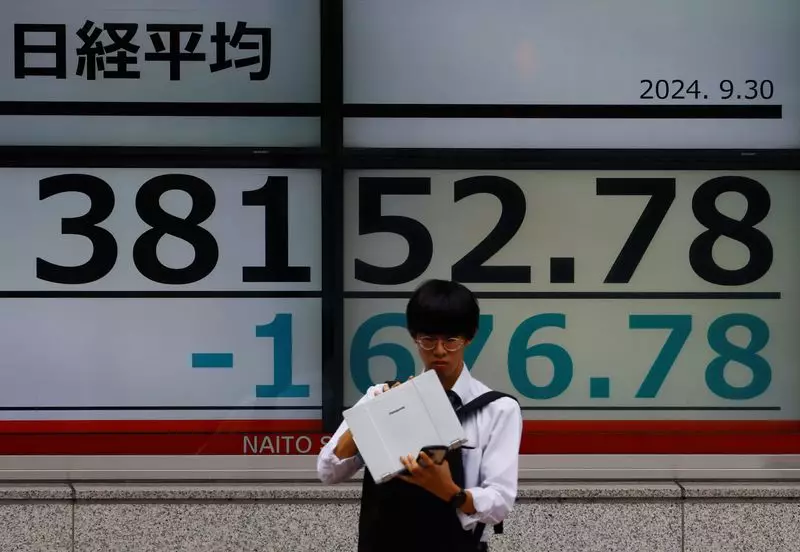The financial landscape in Asia continues to fluctuate in response to external economic indicators, particularly those emanating from the United States. As investors digest the latest developments, Monday saw a notable rally in Asian stock markets following a positive report on U.S. inflation, bolstering expectations for potential policy relaxation from the Federal Reserve in the coming year. This article delves into various factors influencing market movements while considering the broader implications of these economic signals.
The recent U.S. inflation report has shifted the sentiment among Asian investors, offering a glimmer of hope for a more dovish monetary policy. With the U.S. government managing to avert a shutdown, market moods improved considerably. The inflation figures presented were benign, leading to a collective optimism as reflected in the behavior of major stock indices. The move of MSCI’s Asia-Pacific index, which experienced a 0.3% increase, paints a promising picture.
Markets within the region reacted robustly: Japan’s Nikkei Index increased by 0.7%, and South Korea’s market firmed by 0.9%. Futures for the S&P 500 and Nasdaq also indicated positive momentum, despite previous declines over the last week. This juxtaposition of immediate optimism against a backdrop of recent market volatility underscores the transient nature of investor sentiment.
The dollar maintains its strength, buoyed by a robust economic backdrop despite pressures in international markets. The dollar index hovered near a two-year peak, suggesting resilience against currency counterparts such as the euro, which struggles to maintain support. The elevated status of the dollar poses significant challenges for emerging markets, which find their local currencies depreciating and domestic inflationary pressures rising.
Emerging economies are resorting to interventions to stabilize their currencies, creating a dilemma between maintaining fiscal stability and managing inflation. This dual challenge requires deft balancing acts from policymakers in these countries.
Moreover, the spike in bond yields poses a crucial challenge for the financial landscape. Recent trends indicate a marked increase, with market expectations for U.S. interest rates moderating to reflect a less aggressive stance than previously anticipated. The bond market has faced significant pressure, with 10-year yields experiencing their most substantial rise since April 2022. Investors are watching this area closely, as rising yields can stifle borrowing and hinder economic growth.
Simultaneously, the increasing yields have impacted commodity prices negatively, most notably gold and oil. Gold prices dipped under the weight of a strong dollar and the allure of higher-yielding securities, while oil markets grapple with concern regarding demand, particularly tied to China’s economic performance.
Intriguingly, analysts have pointed out a heavy concentration of gains among a few major companies within the S&P 500, highlighting potential vulnerabilities as the market heads into 2025. For instance, a reported gain of 23% in the index loses substantial luster when one considers that excluding the twelve largest firms reduces the increase to only 8%. Such disparities raise questions regarding sustainability and market breadth, serving as a cautionary note for investors focusing excessively on top-tier performance.
As global conditions evolve, markets must navigate through the interconnectedness of economic indicators, monetary policies, and geopolitical issues. The consensus among economists indicates a watchful approach will precede any major policy changes, with predictions for potential interest rate cuts in the upcoming year remaining closely monitored.
The Asian share rally, invigorated by positive U.S. inflation readings, signals a cautious optimism amidst an intricate web of financial dynamics. As currency pressures and bond yield fluctuations continue to present challenges, stakeholders must remain vigilant. The shifting market landscape calls for strategic foresight, particularly in the wake of looming concentration risks and emerging economies’ vulnerabilities. Understanding these intricacies will be critical for investors as they navigate an increasingly complex global economy.

